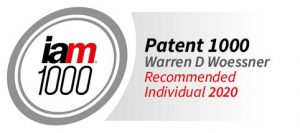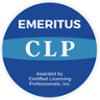In Ino Therapeutics LLC v. Praxair Distrib., Inc., Appeal no.2018-1019 (Fed. Cir., August 27, 2019) a divided Fed. Cir. panel comprising Judges Dyk and Prost, Newman dissenting affirmed a district court decision that a number of INO’s patent claims were patent ineligible as attempts to claim a natural phenomenon. Five method-of-treatment patents were involved, including U.S. Pat. Nos. 8,282,966 and 8,795,741.
The relevant claims were directed to reducing the risk that inhalation of nitrous oxide (“iNO”) by neonatal patients identified having hypoxic respiratory failure, who also are identified as having left ventricular dysfunction, do not receive iNO, due to their increased risk of pulmonary edema. Claim 1 of the ‘741 patent reads as follows:
- A method of treating patients who are candidates for [iNO] treatment, which method reduces the risk that inhalation of [NO] gas will induce an increase in pulmonary capillary wedge pressure (PCWP) leading to pulmonary edema in neonatal patients with hypoxic respiratory failure, the method comprising:
(a) identifying a plurality of term or near-term neonatal patients who have hypoxic respiratory failure and are candidates for 20 ppm [iNO] treatment;
(b) determining that a first patient of the plurality does not have left ventricular dysfunction;
(c) determining that a second patient of the population has left ventricular dysfunction [LVD], so is at particular risk of increased PCWP leading to pulmonary edema upon treatment with [iNO];
(d) administering 20 ppm [iNO] treatment to the first patient; and
(e) excluding the second patient from treatment with [iNO], based on the determination that the second patient has left ventricular dysfunction, so is at particular risk of increased PCWP leading to pulmonary edema upon treatment with [iNO].
The claim is an attempt to claim a negative – not treating patients who have LVD with the standard iNO treatment for hypoxic respiratory failure, because the inventors discovered that LVD patients were more likely to develop pulmonary edema. The patentee claimed the invention as an method of selection, wherein a population of patients who normally would all be treated with iNO are divided into a sub-population that is, in fact, treated wiht iNO, and a sub-population that is not treated with iNO. But is excluding a group of patients from treatment when a second group receives the treatment, a method of medical treatment? Is not using iNO in IVD patients a new use for a known compound?
The majority faced questions that should have been difficult to answer and did require a 22 page opinion. The majority first addressed the question of whether or not the claim is directed to a natural phenomenon. The majority held that even reading the claim as a whole confirms its opinion:
“[T]he focus of the invention is not on a new way of actually treating the underlying condition of hypoxic respiratory failure. Nor does it recite a way of reducing the risk of pulmonary edema while providing some level of treatment to those patients. Rather the focus of the invention is screening for a particular adverse condition that, once identified, requires iNO treatment be withheld. A treatment step of administering a prior art dosage is also present. But that step is plainly not the focus of the claimed invention.”
“Unlike Vanda, claim 1 does not recited a specific method of treating the disease using an improved set of specific doses in light of this discovery. Instead, the broad directive to exclude all neonatal patients with LVD from iNO treatment (while continuing to treat other patients according to the established dose), collapses the claim into a claim focused on the natural phenomenon.”
“Properly understood, this added [exclusion] step is simply an instruction not to act. In effect, the claim is directed to detecting the presence of LVD in a patient and then doing nothing [to those patients] but leaving the natural processes taking place in the body alone for the group of LVD patients. Accordingly the claim is directed to the natural phenomenon.”
The claim can be conceded to recite a natural phenomenon – the correlation between neonates with hypoxic respiratory failure and LVD and the risk of pulmonary edema if iNO is administered. But how can the claim be “collapsed” to “focus on” the natural phenomenon to the extent that treatment of the non-LVD neonates with iNO can be ignored. The Mayo court disregarded the drug administration step as mere information gathering – in fact there was no recitation that the test subjects were being treated. In this case, the patients who are non-LVD are treated with iNO in a therapeutic amount.
The underlying rationale for this decision may well be the majority’s attempt to define a “method of medical treatment” as requiring an action step that alleviates the pathology:
“Here, by contrast [to Vanda], the invention is not focused [ed.’s note: there’s that word again] on changing the physiological state of the patient to treat the disease. The claimed invention is focusss on screening for a natural law….Once the information about the LVD is detected no iNO treatment is given. And as far as the claim specifies, the patient’s state may remain unchanged and natural bodily processes may proceed.”
But, in a claim for reducing risk, isn’t keeping the patient’s state unchanged – keeping the patient alive – a good thing? Patentee is faulted again and again for not reciting a alternative for iNO treatment for at-risk patients, even to the point of suggesting that patentee should have invented one (!) Maybe there is one, but I think that this claim has enough practical utility to pass through the 101 sieve.
A final hypothetical: Given that it was unobvious to test neonates with hypoxic respiratory failure for LVD, what if patentee pursued a claim to a method to treat neonates with hypoxic respiratory failure comprising: “determining that said neonate does not have LVD and so is not at risk of increased PCWP leading to pulmonary edema if the neonate is treated with iNO; and administering 20 ppm iNO treatment to the neonate”? This claim is focused on an improved method to treat such neonates with iNO. As Judge Newman might well agree, “The claim recites a multi-step method of administering iNO so that patients without LVD can be safely treated without adverse events.This method is not a law of nature, it is not a natural phenomenon.” (Slip. op. at p. 5 – slightly rewritten to fit the hypothetical claim.)






